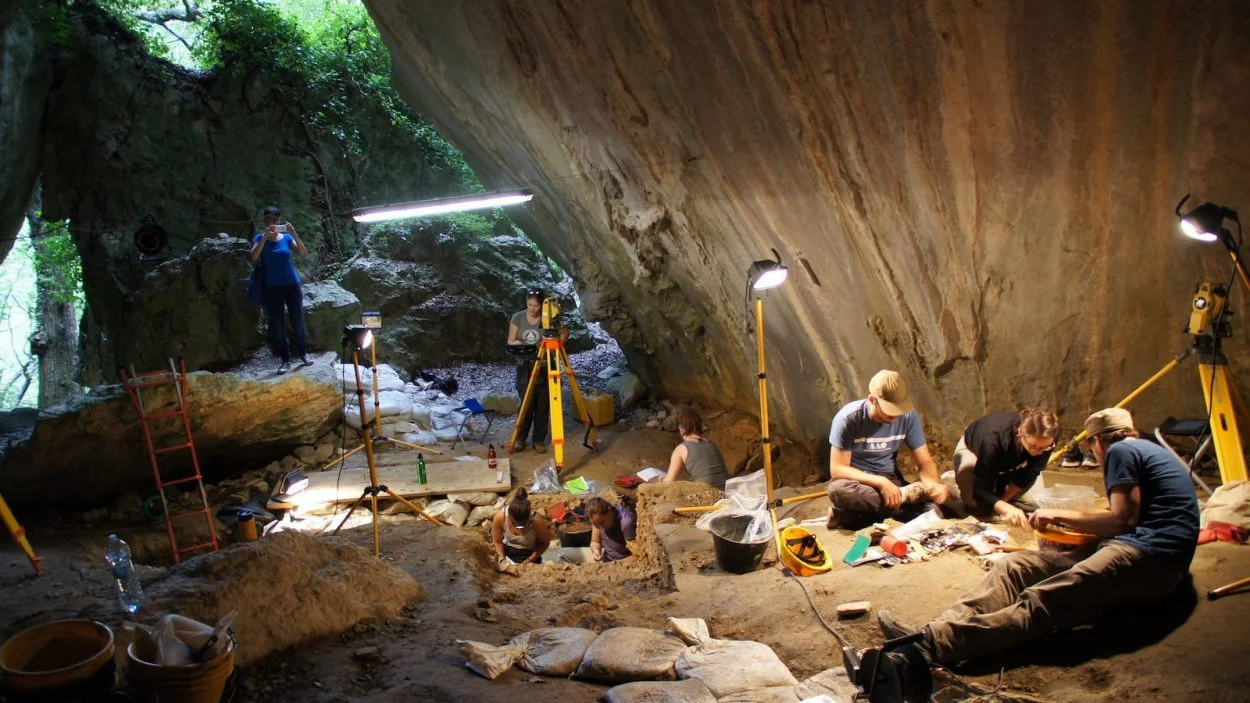An international team of researchers have uncovered the oldest documented burial of an infant girl in Arma Veirana, a cave in the Ligurian pre-Alps of north-western Italy that reveals a Mesolithic society that honoured its young.
Around 10,000 years ago during the end of the last Ice Age, a group of hunter-gatherers buried an infant girl in a cave with 60 pierced shell beads, four pendants and an eagle-owl talon. The burial offers a glimpse into the child mortuary practices of a Mesolithic society in Western Europe, that seemingly gave egalitarian funerary treatment of an infant female.
An analysis on the ornaments showed that they exhibited wear, suggesting that they were deposited by Mesolithic group members who had an invested care in each piece.
Jamie Hodgkins, PhD, palaeoanthropologist, and associate professor of anthropology at the University of Colorado Denver said: “The evolution and development of how early humans buried their dead as revealed in the archaeological record has enormous cultural significance.”
Previous excavations to expose the stratigraphic layers in Arma Veirana found tools over 50,000 years old that are typically associated with Neanderthals in Europe (Mousterian tools). To better understand the stratigraphy of the cave and document its occupational history, the researchers opened new sections in 2017 where they unearth the burial and carefully excavated through to 2018.
In a new study published in Scientific Reports, the researchers applied Radiocarbon dating on the infant nicknamed “Neve,” that has dated her remains to 10,000 years ago. An amelogenin protein analysis and a DNA study revealed that the infant was female, belonging to a lineage of European women known as the U5b2b haplogroup.
“There’s a decent record of human burials before around 14,000 years ago,” said Hodgkins. “But the latest Upper Palaeolithic period and earliest part of the Mesolithic are more poorly known when it comes to funerary practices. Infant burials are especially rare, so Neve adds important information to help fill this gap.” Find out more
Header Image Credit : University of Colorado Denver





